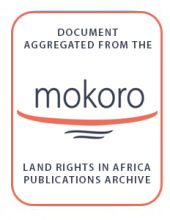Land Library Search
Through our robust search engine, you can search for any item of the over 73,000 highly curated resources in the Land Library.
If you would like to find an overview of what is possible, feel free to peruse the Search Guide.
/ library resources
Showing items 1 through 9 of 29.Presents a framework for tackling urban-rural land challenges. Designed to help a range of stakeholders in developing countries understand how to adopt an inclusive approach to land management and administration initiatives to produce a balance in urban and rural development.
This study presents a country-wide quantitative analysis of the Parliamentary Land Investigation Commission reports that were released to the public. The aim is not just to analyze the information contained in the reports, but also to elicit information they do not reveal.
Summary report of Mekong Region Land Governance (MRLG)'s online dialogue on 'Recognition of Customary Tenure in the Mekong Region' held in 2017, containing justification for the dialogue, key take-aways, next steps and recommended resources, published by MRLG in 2017.
Despite progressive provisions on gender equality in Tanzania’s land laws, women have little representation in land allocation decisions. Mainstreaming gender in local regulations can help address this problem.
Large-scale agricultural investments impact upon men and women in different ways, yet women’s voices and interests are not always heard in decisions about land.
This study investigates the implications of large-scale land concessions in southern Laos and northeastern Cambodia with regard to places outside of actual concession areas, both within the countries where the concessions are located and beyond.
A 2015 report published by Mekong Region Land Governance project (MRLG) issue of land governance in Cambodia. Land governance is an inherently political-economic issue.
An extended abstract of Natalia Scurrah and Philip Hirsch's report on land law in the Mekong region, published by Mekong Land Research Forum.
This study uses publicly available financial and spatial data to examine the geography of land-intensive investment in Southeast Asia, and to identify the


